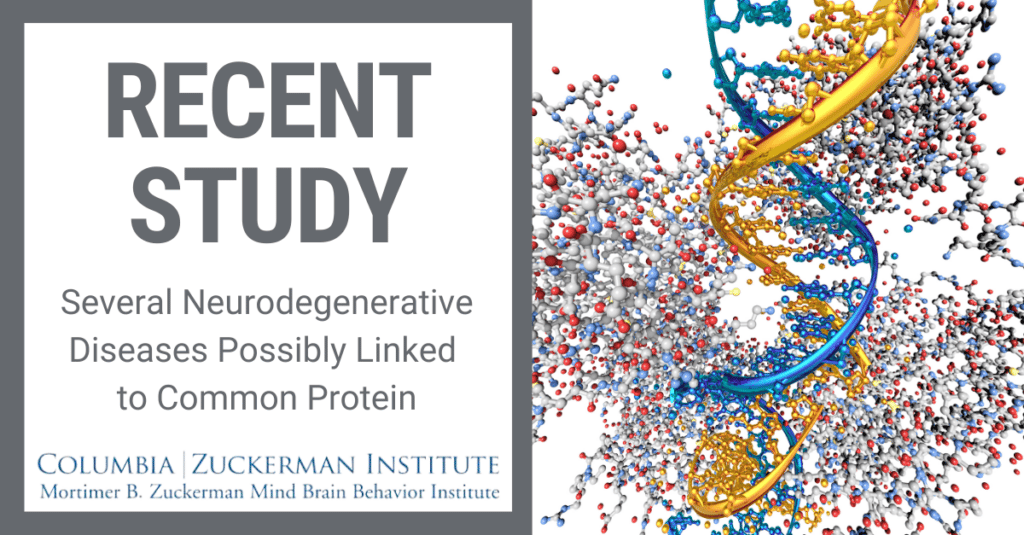Diverse malattie neurodegenerative potrebbero essere collegate a una proteina comune, suggerisce uno studio

A new study pubblicato in Cellula has identified a common protein linked between several neurodegenerative diseases, including FTD.
Researchers have found that the TMEM106B protein, a protein that sits in the membranes of lysosomes and endosomes, appears to point toward a commonality between FTD, progressive supranuclear palsy (PSP), and Lewy body dementias.
“We have found that a protein called TMEM106B can form fibrils, and this behavior was not known before,” biophysicist and study author Xinyu Xiang of Standford University said in a comunicato stampa. “This protein is a core component of lysosomes and endosomes, which are organelles that clean up the junk that builds up in our cells as we get older.”
Former AFTD-funded FTD Biomarkers Initiative grant recipient Anthony W.P. Fitzpatrick, PhD, of Columbia University’s Mortimer B. Zuckerman Institute Mind Brain Behavior Institute, led the research along with an international team of 22 collaborators.
Fitzpatrick and his team extracted proteins from brain tissue donated by 11 patients who lived with FTD, PSP, and dementia with Lewy bodies. The researchers used cryo-electron microscopy, or cryo-EM, to flash-freeze the proteins to capture the fine details of their shape and structure.
“Each of these diseases has a unique protein tangle, or fibril, associated with it,” disse Dr. Fitzpatrick. “These proteins associated with diseases have their own shapes and behaviors.”
According to an article in Allerta scientifica, the researchers speculate that the TMEM106B protein fragments and forms fibrils, which then disrupts lysosome function.
“We now have a promising new lead,” Dr. Fitzpatrick added. “It could point towards a common thread linking a range of neurodegenerative diseases and could open the way to new interventions.”
Read the full Science Alert article Qui.
Pictured above: A key fragment of the protein TMEM106B, several atomic models of which are shown here, can stack into single or twinned types of fibrils. (Credit: Andrew Chang and Anthony Fitzpatrick / Columbia University’s Zuckerman Institute / Cell)
Per categoria
Le nostre newsletter
Tieniti informato
Iscriviti ora e tieniti aggiornato sulle ultime novità con la nostra newsletter, gli avvisi sugli eventi e altro ancora...
